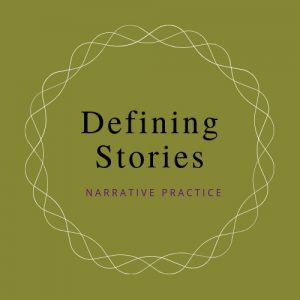“Neither the life of an individual nor the history of a society can be understood without understanding both.”
(C. Wright Mills, The Sociological Imagination)

The many ideas and methodologies that comprise Narrative Therapy have me regularly intrigued. I witness their effects as I work with individuals and groups. Perhaps one of the most noticeable reactions from clients comes as they consider how their life narrative has taken shape by the greater social and historical context in which they exist. What they realise in this exercise is not only that they (clients) are not the ‘problem’, but that the ‘problem’ is carried and propagated in the imagined social construct of their culture and history.
I was curious about how this recognition of one’s own experiences can be traced back to one’s location within a system of power relationships – “the personal is political” (attributed to Carol Hanisch, 1970). It was this curiosity that contributed to the development of Life Atlas Therapy.
Life Atlas Therapy draws on a timeline concept. Instead of a linear trajectory that maps the positive and negative influences on a client’s life, it maps out a person’s life stories within ‘countries’ of culture and history. This approach considers problem-laden stories within a ‘country’ in which that ‘problem’ originated. For example, ‘Jay’ (not their real name) wanted to discuss a part of their story that they drew in black. They called it ‘Disaster Cove’ – a place where they felt they had been hijacked by trauma and grief and which continued to have a negative influence on their life.
‘Disaster Cove’ was richly described. We use this conversation to externalise ‘Disaster Cove’ with the help of a metaphor. It now becomes a ‘country’ with politics, culture, folklore, themes, and song. Narrative questions included:
- What colour is this place?
- Does it remind you of any actual country?
- What government is in place?
- What parts would you avoid visiting?
- What parts would you recommend for sightseeing?
- Tell me a story that made this place meaningful to you.
- Who was someone that impacted your life in this place?
- Etc, etc, etc.
A rich description of Disaster Cove assisted Jay in understanding why Trauma and Grief had such a dominant voice in their life. We also discussed the ‘sparkling moments’ (White, Re-authoring Lives, 1995) that began to emerge out of Disaster Cove. Jay identified unique outcome stories, strengths, hopes, dreams, and skills of resistance that they teamed up with in this place. In Jay’s words, “It seems like Disaster Cove is not all black … it has a starry sky.” The ‘starry sky’ had been rendered invisible by Trauma and Grief, but now Jay began to uncover alternative landscapes on their Disaster Cove narrative.
Disaster Cove was a ‘country’ that had emerged out of their social and historical context. For example, Jay discovered that it was the ‘stiff upper lip’ cultural norm of this place that allowed trauma such a loud ‘inner’ voice in their life. “I remember being reprimanded for my tears in a public place … it shut me down.” Later on, Jay would remember stories of ‘angry crying’ – a skill of resistance against a social norm that sought to silence them. Jay was beginning to write their Disaster Cove narrative from a whole new perspective.
Life Atlas Therapy is a method I have developed (and am developing in different contexts) that assists individuals and communities to re-engage with their life stories and histories to bring about rich, double story development. In the words of Kaurna Elder, Aunty Barb Wingard, it is a method that helps us remember stories in a way that makes us stronger and connects us to our hopes and dreams.
One of the astounding findings in this research and practice has been the re-emergence of precious stories and memories that been hidden by trauma… a topic for the next post (TBC).
The problem is the problem; the person is not the problem.
– Michael White and David Epston –

Nicole Conner is a qualified Narrative Therapist working in Elsternwick, Victoria. Nicole’s work is built on the premise that the stories we hold to shape who we are, what we do, how we think and how we feel. In other words, our stories give meaning to our lived experience. For more information visit the Defining Stories webpage.